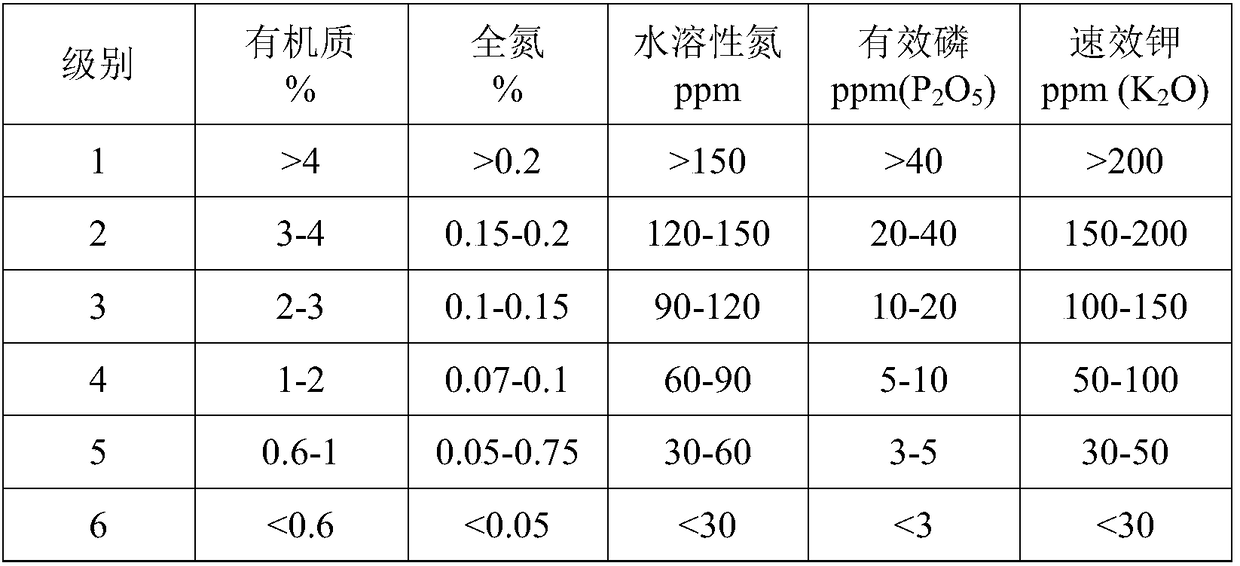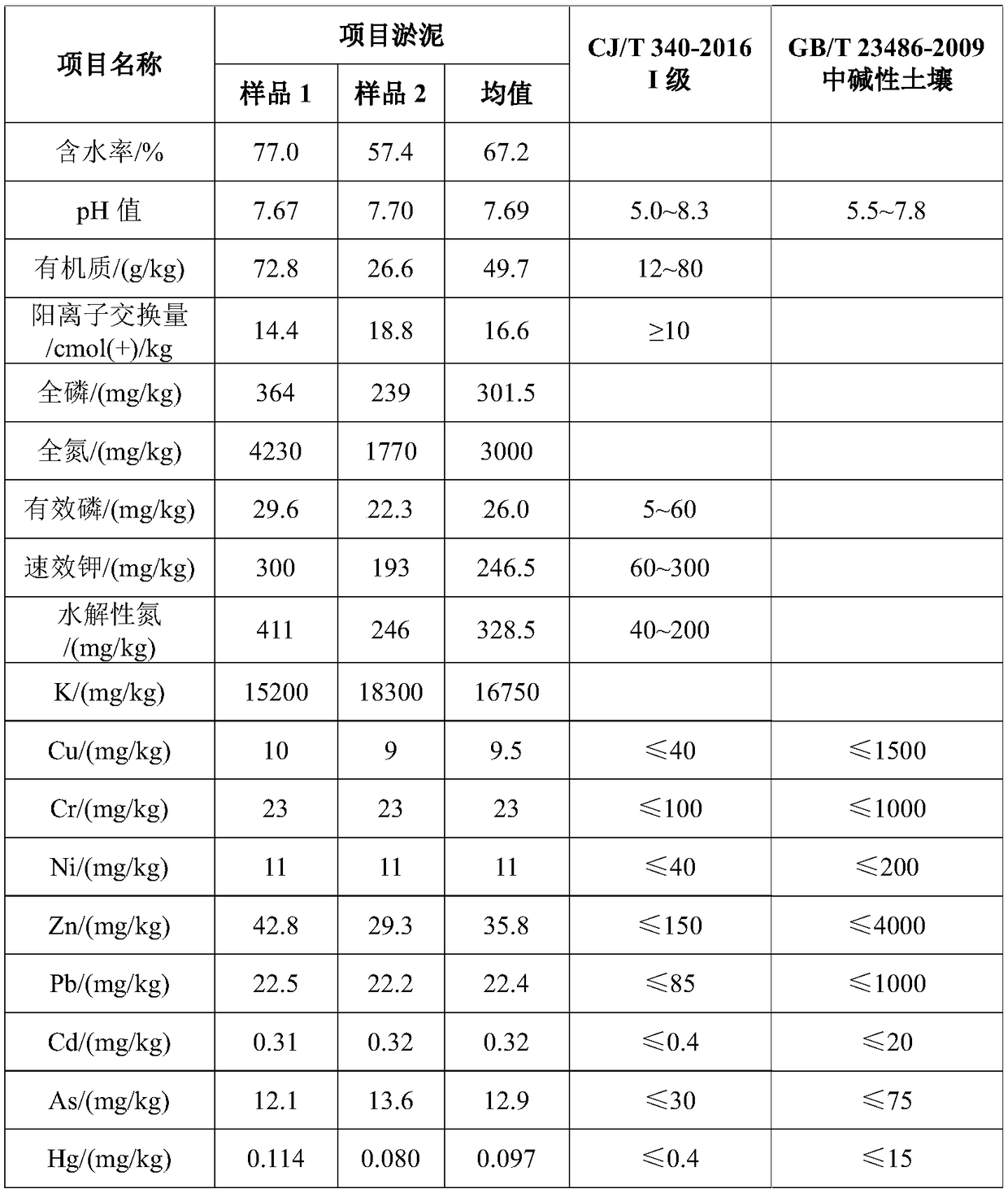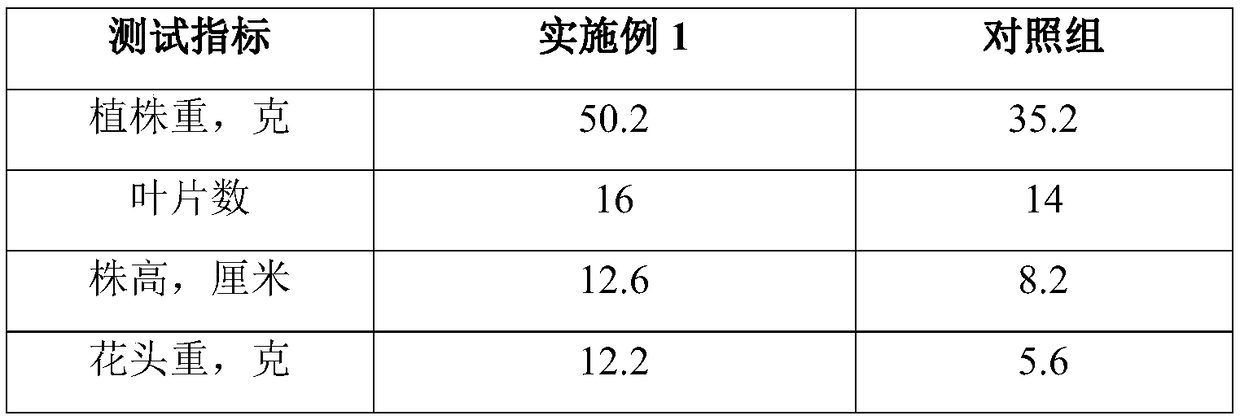Sludge utilization method and application
A silt and silt technology, applied in the silt utilization method and application field, can solve the problems of not very prominent environmental benefit, economic benefit, social benefit, single method, cumbersome silt soil utilization and treatment process, etc., achieving significant economic benefits and protection. Planting environment, the effect of facilitating large-scale promotion and application
- Summary
- Abstract
- Description
- Claims
- Application Information
AI Technical Summary
Problems solved by technology
Method used
Image
Examples
Embodiment 1
[0167] The bacterial agents used in Example 1 and Example 2 include Lactobacillus, Lactobacillus helveticus, Lactococcus lactis, Streptococcus thermophilus, Bacillus subtilis, Bacillus licheniformis and Candida utilis. The number of live bacteria is 2.5 billion / mL, and the ratio of live bacteria of Lactobacillus, Lactobacillus helveticus, Lactococcus lactis, Streptococcus thermophilus, Bacillus subtilis, Bacillus licheniformis and Candida utilis is 1:1: 2:2:0.5:3:0.5.
[0168] Example 1
[0169] A method for utilizing sludge, comprising the steps of:
[0170] 1. Sludge detection: Take 0-20cm of mixed silt at a distance of 200 meters from the center of a certain river, and send the silt to Testing Technology Service Co., Ltd. for testing. The silt testing results are shown in Table 2.
[0171] Table 2 Sludge test results
[0172]
[0173] Compare the results of the sludge test with the soil nutrient grading standards in "Green Planting Soil" (CJ / T 340-2016) and "Urban Sew...
Embodiment 2
[0188] A method for utilizing sludge, comprising the steps of:
[0189] 1. Sludge detection: with embodiment 1.
[0190] 2. Harmless treatment:
[0191] (1) Leveling of the land
[0192] Excavators or bulldozers are used to level the scattered and piled silt. The average thickness of the silt is 10cm, the moisture content of the sludge is 28%, and the moisture content of the soil is 19%.
[0193] (2) Spraying microbial agents
[0194] Add the silt fermented bacterial agent into an appropriate amount of water, and mix well, then spray the diluted bacterial agent evenly on the silt, plow it as soon as possible, and the dosage of the bacterial agent is 15 kg / mu.
[0195] (3) Plowing of the land
[0196] Use a rotary tiller with a depth of 35cm to plow the silt laid in the green belt; control the moisture content of the second rotary tillage mixed sludge at about 40%, and control the moisture content of the third rotary tillage below 20%. During the interval between two rotar...
Embodiment 3
[0204] A method for utilizing sludge, comprising the steps of:
[0205] 1. Sludge detection: with embodiment 1.
[0206] 2. Harmless treatment:
[0207] (1) Leveling of the land
[0208] Excavators or bulldozers are used to level the scattered and piled silt. The average thickness of the silt is 15cm, the moisture content of the sludge is 35%, and the moisture content of the soil is 15%.
[0209] (2) Spraying microbial agents
[0210] Add the silt fermented bacterial agent into an appropriate amount of water, and mix well, then evenly spray the diluted bacterial agent on the silt, plow it as soon as possible, and the dosage of the bacterial agent is 12 kg / mu.
[0211] (3) Plowing of the land
[0212]Use a rotary tiller with a depth of 40cm to plow the silt laid in the green belt; control the moisture content of the mixed sludge at about 35% in the second rotary tillage, and control the moisture content of the third rotary tillage below 15%. During the interval between two...
PUM
| Property | Measurement | Unit |
|---|---|---|
| The average thickness | aaaaa | aaaaa |
| The average thickness | aaaaa | aaaaa |
| The average thickness | aaaaa | aaaaa |
Abstract
Description
Claims
Application Information
 Login to View More
Login to View More - R&D
- Intellectual Property
- Life Sciences
- Materials
- Tech Scout
- Unparalleled Data Quality
- Higher Quality Content
- 60% Fewer Hallucinations
Browse by: Latest US Patents, China's latest patents, Technical Efficacy Thesaurus, Application Domain, Technology Topic, Popular Technical Reports.
© 2025 PatSnap. All rights reserved.Legal|Privacy policy|Modern Slavery Act Transparency Statement|Sitemap|About US| Contact US: help@patsnap.com



